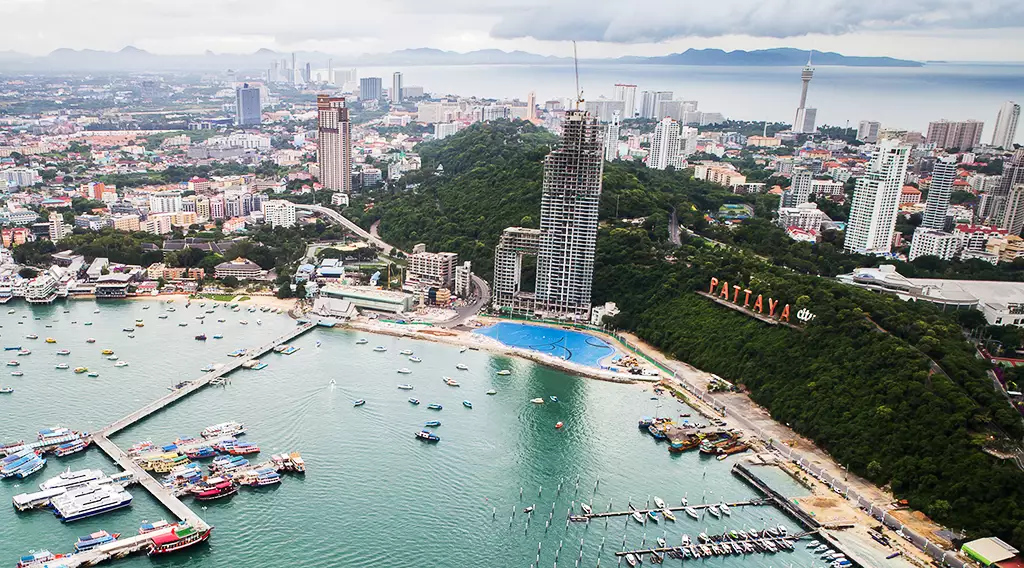Pattaya City to Implement New Monorail Line

Pattaya City, one of Thailand’s busiest tourist destinations in Chonburi province, is poised to welcome a major public transportation project in the form of a new electric monorail. Officials and local business representatives met on July 30th to discuss a recent feasibility study that showed the new Monorail, dubbed the Red Line, would greatly improve both transportation and economic development in the popular coastal city.
Why a Monorail for Pattaya?
One of the main concerns that the Red Line will address is excess traffic on Pattaya City’s roads. New buses or a tram system would give pedestrians alternative options for getting around the city, but they would only add to the crowded streets and have a reduced impact on congestion.
An electric monorail, on the other hand, will take up far less space and do more to fight traffic. It’s also considered a better option for the city’s tourism needs, as a monorail presents a cleaner image and is more suitable for sightseeing than the alternatives.
This option is not without its downsides, however. Electric monorails are not the norm and are relatively rare forms of public transportation. This means that there will undoubtedly be higher costs for construction and maintenance.
The Pattaya City Red Line
At present, the monorail route is planned to include the following stops:
- Thappraya Intersection (Start of the Line)
- Thap Phraya Road
- Jomtien Second Road
- Jomtien Intersection
- Chaiyaphruek 1 Road
- Chaiyaphruek 2 Road
- Eastern National Sports Training Center (End of the Line)
The feasibility study discussed at the hearing recommended that each station on the Red Line be only around 1km apart.
Optimism from Pattaya City’s Business Community
During the public hearing on the new monorail project, the second so far, local business leaders expressed optimism and excitement at the prospect of a new, modern public transportation system. Another reason for the business community’s enthusiasm is the study’s recommended investment format.
The monorail’s feasibility study recommended that the new project be funded utilizing a public-private partnership. This means that instead of the government and taxpayers being responsible for fully funding the project, the private sector will provide funding and guidance, with key investors retaining some sort of control over the project.
At the moment, it is not clear what this partnership will look like, as this investment method is only a recommendation. And, while this meeting and study are a strong step in the right direction, no plans have yet been announced regarding the beginning of construction. More research is likely needed to fully understand the monorail’s impact on the city’s economy and the surrounding environment.
Category: About Thailand










